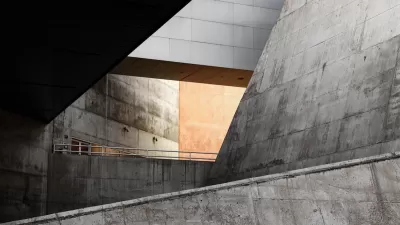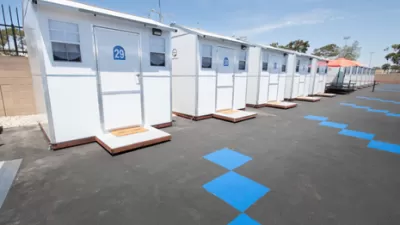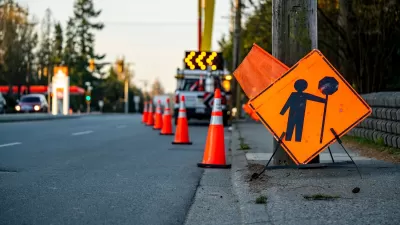By allowing the use of a new vehicle safety communication system called V2V, the U.S. Department of Transportation and the National Highway Traffic Safety Administration are hoping to protect drivers without overstepping privacy boundaries.
The DOT and NHTSA have announced that they will begin to allow vehicles to install V2V technology. After additional study by the NHTSA, the federal government could “eventually require the system to be included in all new vehicles,” reports Bridget Bowman.
The V2V technology is not an automated driving system, according to Bowman’s report. Rather, the new technology communicates with other cars in the area and provides warnings to the driver. (Another report by Mark Mooney from earlier this year provides more details on how V2V technology works.) A statement by Transportation Secretary Anthony Foxx on the new technology indicates, however, that government hopes the new technology has a dramatic effect for road safety: “Vehicle-to-vehicle technology represents the next generation of auto safety improvements, building on the life-saving achievements we’ve already seen with safety belts and air bags,…By helping drivers avoid crashes, this technology will play a key role in improving the way people get where they need to go…”
Also, “the communication technology does not involve any exchange of personal information nor does it identify or track specific vehicles. V2V would only transmit ‘basic safety data.’”
FULL STORY: U.S. Department of Transportation will allow vehicle-to-vehicle safety technology

What ‘The Brutalist’ Teaches Us About Modern Cities
How architecture and urban landscapes reflect the trauma and dysfunction of the post-war experience.

USDOT Revokes Approval for NYC Congestion Pricing
Despite the administration’s stated concern for the “working class,” 85 percent of Manhattan commuters use public transit to enter the city.

Tiny House Villages for Addressing Homelessness: An Interview with Yetimoni Kpeebi
One researcher's perspective on the potential of tiny homes and owner-built housing as one tool to fight the housing crisis.

Preserving Altadena’s Trees: A Community Effort to Save a Fire-Damaged Landscape
In the wake of the Eaton Fire, Altadena Green is working to preserve fire-damaged but recoverable trees, advocating for better assessment processes, educating homeowners, and protecting the community’s urban canopy from unnecessary removal.

The VW Bus is Back — Now as an Electric Minivan
Volkswagen’s ID. Buzz reimagines its iconic Bus as a fully electric minivan, blending retro design with modern technology, a 231-mile range, and practical versatility to offer a stylish yet functional EV for the future.

Investigation Reveals Just How Badly California’s Homeless Shelters are Failing
Fraud, violence, death, and chaos follow a billion dollar investment in a temporary solution that is proving ineffective.
Urban Design for Planners 1: Software Tools
This six-course series explores essential urban design concepts using open source software and equips planners with the tools they need to participate fully in the urban design process.
Planning for Universal Design
Learn the tools for implementing Universal Design in planning regulations.
Economic & Planning Systems, Inc.
UCLA Lewis Center for Regional Policy Studies
Mpact (formerly Rail~Volution)
Chaddick Institute at DePaul University
City of Piedmont, CA
Great Falls Development Authority, Inc.
HUDs Office of Policy Development and Research




























